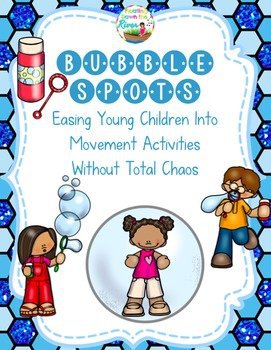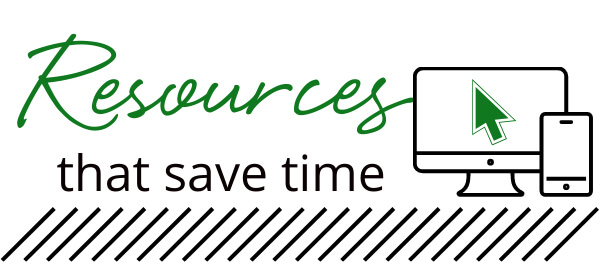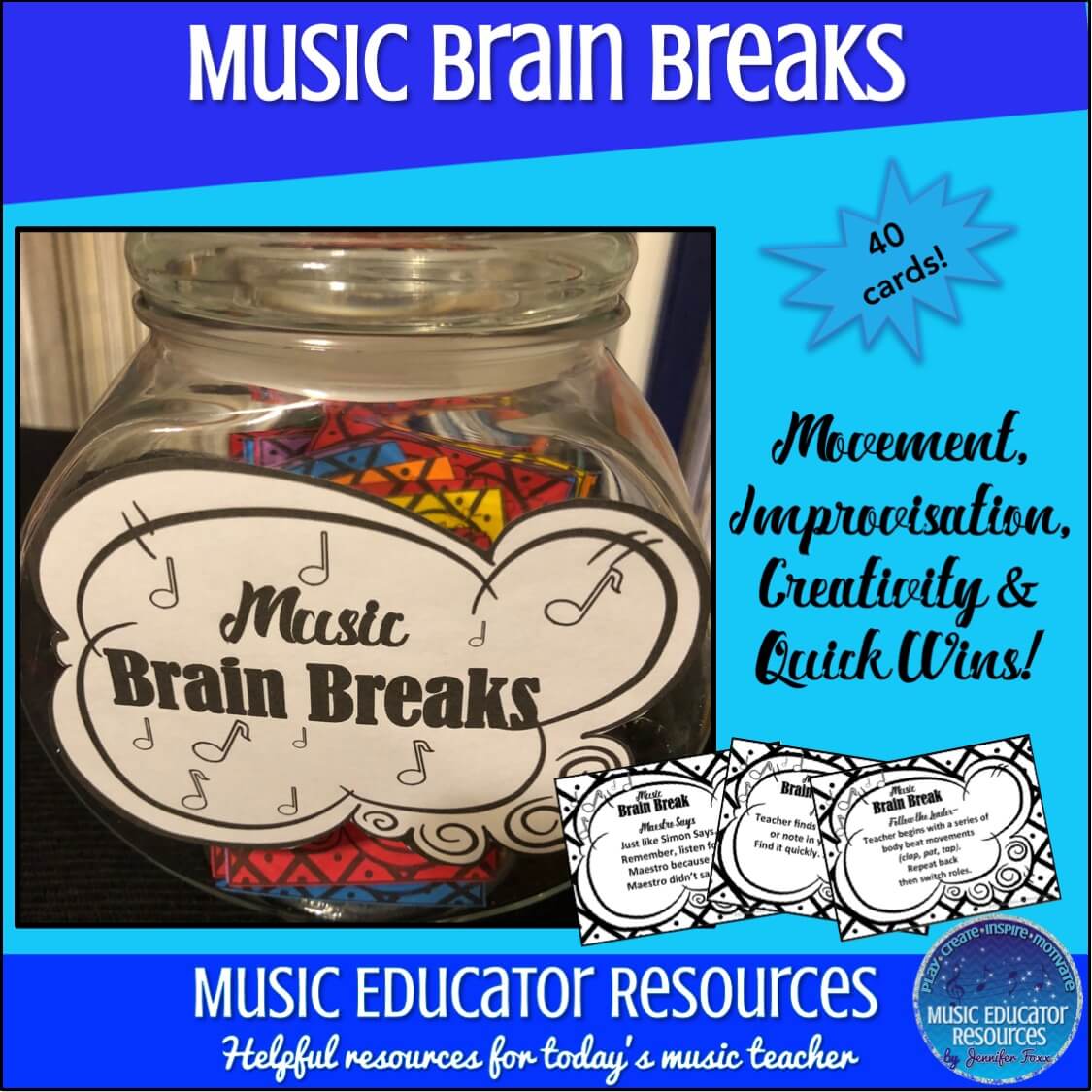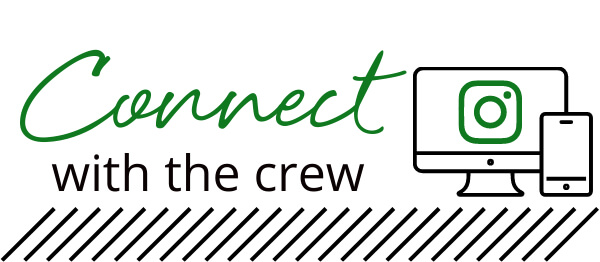I have to admit it: this Winter has been kind of underwhelming so far in Maryland. No major snow accumulation to speak of! However, with frigid temperatures, kids have been spending more and more time indoors. That means less time moving and more time cooped up in small spaces. I think it’s so important to add more movement into my lessons during the colder months, since little bodies need to move.

By now I’m sure you’ve heard about the music and movement website, GoNoodle. In my schools, at least, classroom teachers use it for “Move, Move, Move” and indoor recess every day! This means that if I want to keep my students engaged and interested in movement in the music room, I need to make sure I am doing something different.
Here are some movement ideas that you can easily insert into your existing lesson plans to get kids up and moving. Many of these ideas will also have links to free TpT product downloads, so please enjoy!
1. Body Percussion
Body percussion has always been one of my all-time favorite ways to engage students with movement in the music room. I like to use body percussion at the beginning of the school year to review rhythm reading in a fun and different way. Body percussion can also be a great way to scaffold the type of coordination kids will need before playing pitched percussion instruments.
When I lost my music room at one school and was forced to teach from a cart, I found that body percussion was an easy and fun way to get kids making music within the confines of their classroom. I like to project the body percussion charts on the SmartBoard or with any digital projector. This way, my students can get some experience reading a kind of staff notation while practicing rhythm. I like to project them and practice a couple whole-group first, then split my students off into groups and give each group a print-out to learn and perform for the class. I have several charts available for sale in my store, but you can start with this freebie to try it out with your kids!
2. Folk Dance
One of the most seamless ways we can add more movement into our lessons is through folk dance. Some teachers choose to combine with their P.E. counterparts to do a unit on folk dance at some point in the school year. While I love doing things like this, I also love to incorporate folk dance in my lessons no matter what concept I’m teaching.
Folk dance is great for teaching form, since different sections of the music will often have different moves to go with them. You can also use folk dance to teach rhythm by notating the rhythm of specific dance steps or gestures. If you’re new to folk dance and are not sure where to start, I recommend going to a local Orff or Kodaly workshop where you will likely learn to experience the joy of folk dancing firsthand. If attending a workshop in person isn’t an option for you, YouTube will be your best friend. I recommend starting with the New England Dance Masters.
Already an expert on folk dancing? You can take your lesson to the next level with this super cool freebie from Mrs. Stouffer’s Music Room, a Folk Dance Creation Lesson. This file is a free lesson plan where you guide your students through the steps to create their own folk dance. Personally, I believe that students get more out of a lesson when they can take some ownership of their learning. This is a great way to do just that.
3. Active Listening
Whenever I want to have my students listen to a musical masterwork, I know that asking them to just sit and listen is not an option. They need something to focus their attention, whether it’s a visual listening map or a set of movements to complete. You can use learning props like scarves or ribbon wands to help students respond to the music. You could also simply have students do hand and arm movements while standing in place (this is a great option for younger students who may need more control than chaos.) I like this example by Margaret Cook, movements to the Nutcracker Miniature Overture, who shared it with the Music Teachers facebook group. You will need to be a member of the facebook group to see the video.
Depending on the developmental level of the class, some children may struggle with personal space during active listening. I like to use the imagery of a “personal bubble” to help students remember to stay out of other peoples’ space. This freebie, Bubble Spots, from Floating on the River will help your youngest students to understand the imagery behind the bubble. She thoroughly describes the process she uses to teach her kids about the bubbles and even includes some visuals to show.
4. Listen and Respond
This idea is kind of like the reverse of an active listening lesson. Rather than the teacher modeling what movements to do, in a listen and respond lesson, the teacher plays certain sounds on an instrument and the students choose appropriate movements to represent what they hear. This awesome suggestion comes from Chrissy Hutzel:
I like to play on the temple blocks and have the kids match their footsteps to my playing. So I’ll start with two of the middle blocks, just back and forth at a walking tempo. Then go to the highest one and play softer, but quicker to get them to tip-toe. Then use both mallets together on one, harder, to get them jumping. Then both together starting on a middle one, then splitting to a lower and higher one to get jumping-jack feet, then going up and down the 5 pitches to get them going back and forth. Super fun and easy, especially great to fill a few extra minutes at the end of class.
This concept can also be an awesome classroom management tool to teach procedures. I will teach a procedure using a short melody, like one of these:

Then, once my kids have them memorized, I will play them on a xylophone without saying anything. This is a perfect way to assess which students can identify the correct melody and get them to follow classroom procedures in a fun way. And as an added bonus, it’s a great voice-saving technique for those of us concerned with our vocal health.
5. Movement Wall
My last new idea is a tool you can use to inspire your students’ creativity. By making a movement wall or bulletin board in your classroom, you can build kids’ movement vocabulary. I used it this week with my Kindergarten students while we were reviewing steady beat. I had a volunteer come up and point to a word (and helped my pre-readers to decode what it said) and the rest of the class had to demonstrate a steady beat while moving in the correct style.
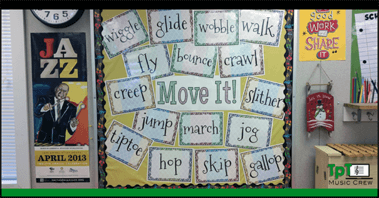
The movement wall is also a handy thing to keep around for older students. When you ask students to create movements to go along with music, many of them will always respond with, “I can’t think of any moves to do.” Having this wall up preempts that response. You can download this movement wall with sixteen different words for free in my store.
I hope this list has helped to inspire you with some new movement ideas for your classroom! If you have more suggestions of things to do to keep kids moving and grooving during these colder months, please let me know in a comment below!
Musically,
Rachel




